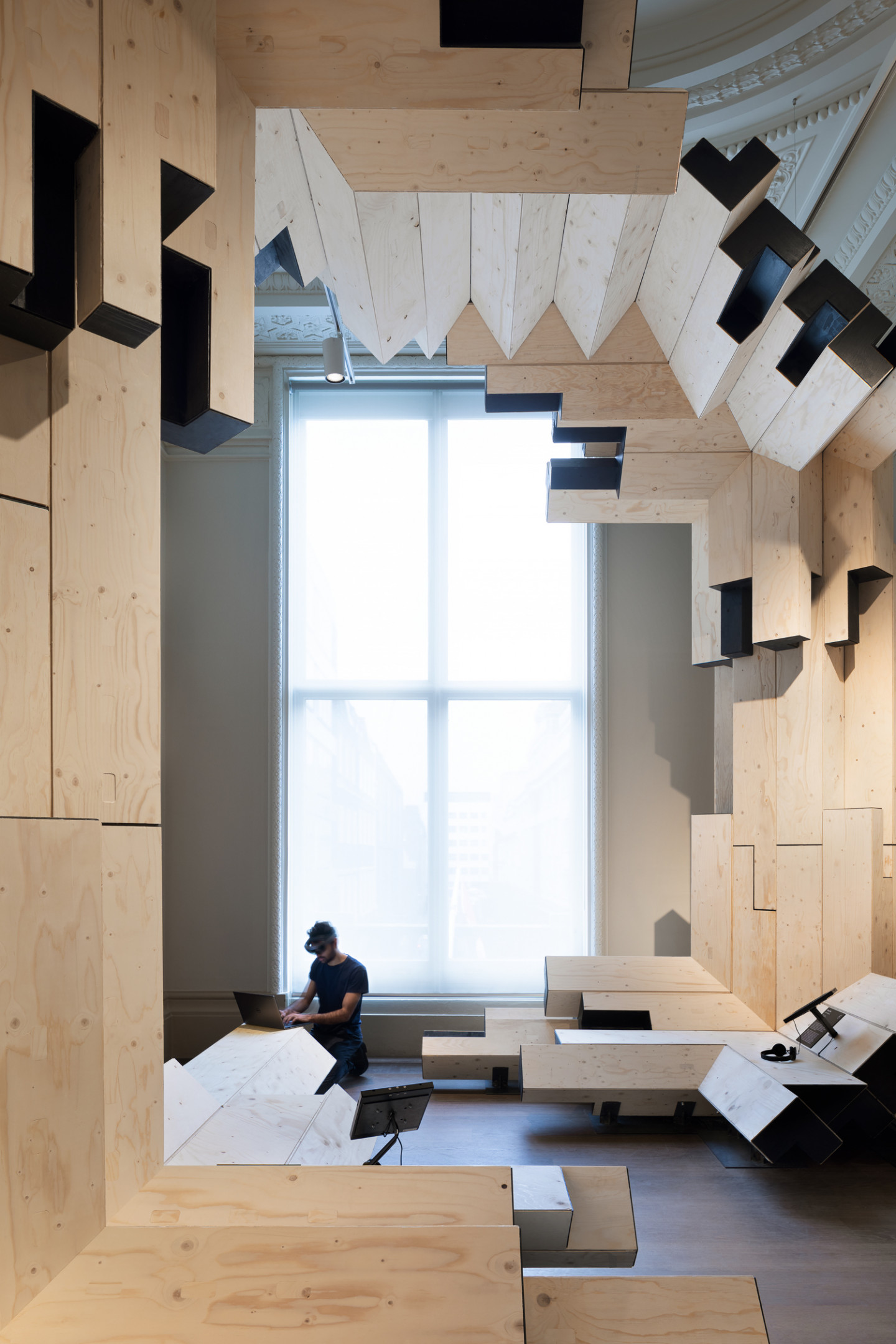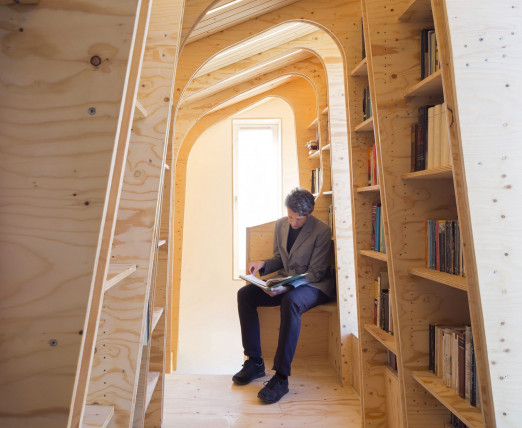London-based designer, Gilles Retsin has created an interlocking timber-framed installation using robotics and augmented reality technology (AR).
Using 9mm and 12mm soft plywood blocks, the design called ‘Real Virtuality’ can be fabricated to take any structural position within the space.
Retsin’s work showcases how virtual technologies can transform physical space; and in particular, how AR can be used as a tool in the fabrication of low-cost timber architecture.
Using Microsoft’s HoloLens technology (which creates an interactive holographic image in the wearer’s field of vision), Retsin and his team dictated the position of the plywood blocks.
After finalising their designs, the AR technology sends instructions from the digital model to the robotics working on the site.
As the AR lays the wooden blocks upon the architects’ physical world, the process gives the team an understanding of what a fully-automated construction process appears like, and what the limits of the design could be.
Instead of sandwiching the blocks together like a jigsaw puzzle (where each piece fits a single part), the structure is modular, meaning that every block can fit together.
Although the plywood blocks are relatively weak by themselves, together, the modular system establishes a strong structure which is strengthened by the tension exerted by the lateral steel rods.
“It’s becoming more and more clear that timber will be one of the most important materials for construction in the 21th century,” says Retsin.
“The emphasis is often on the sustainable aspects of timber, but what is underestimated is also the degree to which timber construction can be automated and therefore reduce the cost of construction.”
Retsin is a tutor at the Bartlett School of Architecture and his work appeared as part of the Building Centre’s Digital Turn series.
To view more of Retsin’s designs, visit his website.






